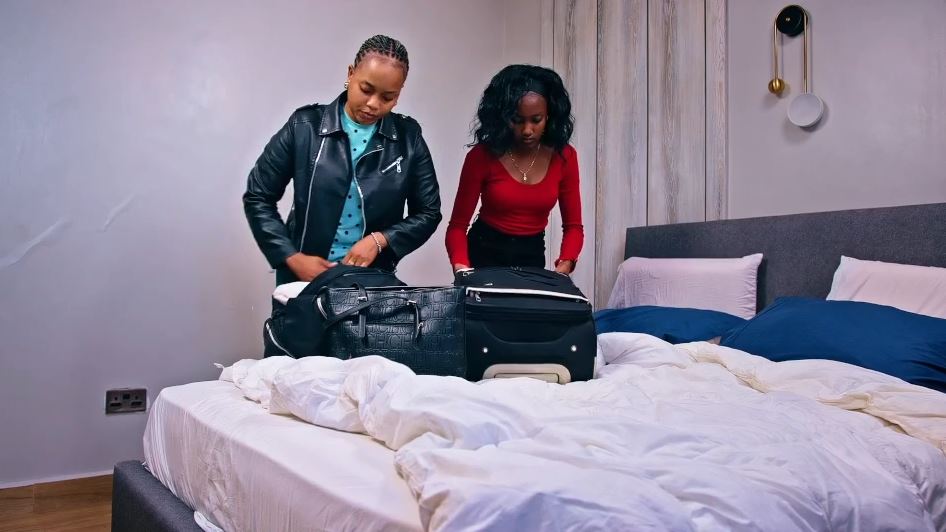Why the Nothinggg Phone (7) Lite is a Fake Phone Flooding the Kenyan Market
The Kenyan smartphone market has seen a surge in counterfeit devices, with the so-called “Nothinggg Phone (7) Lite” emerging as a notable example. This article examines why this phone is a fake, identifies the original phone it likely emulates, and provides practical guidance for Kenyan consumers to avoid purchasing counterfeit devices. It also lists trusted retailers where authentic versions of the emulated phone can be purchased, ensuring buyers receive genuine products with proper warranties and support.
The Non-Existence of Nothinggg Phone (7) Lite
As of July 11, 2025, the “Nothinggg Phone (7) Lite” is not a recognized model from Nothing, a London-based tech company known for its minimalist smartphones. The brand name “Nothinggg” with extra “g”s is a clear indicator of a counterfeit, as the legitimate brand is simply “Nothing.” According to Nothing’s official website and reputable tech sources like GSMArena and TechRadar, Nothing’s current lineup includes the Nothing Phone (1), Nothing Phone (2), and Nothing Phone (2a), with no mention of a Phone (7) or Phone (7) Lite. The naming convention suggests a fabrication by counterfeit manufacturers, likely exploiting Nothing’s sleek design and growing popularity in markets like Kenya. These fake devices are flooding informal channels, such as street vendors and social media marketplaces, deceiving buyers with low prices and imitation aesthetics.
The Original Phone It Emulates
The fake Nothinggg Phone (7) Lite likely attempts to emulate the Nothing Phone (2a), a budget-friendly smartphone released in March 2024, which has gained traction for its unique transparent design and affordable price point. Key specifications of the genuine Nothing Phone (2a), sourced from GSMArena and Nothing’s official website, include:
- Display: 6.7-inch AMOLED with a 120Hz refresh rate and 1084 x 2412 pixels resolution (~394 ppi density).
- Chipset: MediaTek Dimensity 7200 Pro (4nm), octa-core processor for smooth performance in daily tasks and gaming.
- Battery: 5000mAh with 45W fast charging for reliable battery life.
- Storage: Up to 12GB RAM and 256GB internal storage, non-expandable.
- Operating System: Runs Nothing OS 2.5 based on Android 14, offering a clean, bloatware-free interface with regular updates.
- Camera: Dual 50MP rear cameras (main + ultrawide) with OIS and a 32MP front camera, supporting 4K video recording.
- Design: Transparent back with Glyph Interface (LED light strips), IP54 dust/splash resistance, and Gorilla Glass 5 front.
Counterfeit versions, such as the Nothinggg Phone (7) Lite, often mimic the transparent design and Glyph Interface but use inferior hardware, like low-resolution displays, outdated processors, and modified Android systems with fake Nothing OS skins. These fakes typically lack official app support, fail to receive updates, and may include pre-installed malware, posing security risks.
Why It’s Flooding the Kenyan Market
Kenya’s smartphone market is vulnerable to counterfeits due to high demand for stylish, affordable devices and economic constraints that limit access to premium phones. The Nothinggg Phone (7) Lite is sold at significantly lower prices—sometimes as low as KSh 8,000 compared to the Nothing Phone (2a)’s market price of around KSh 30,000–40,000—making it attractive to budget-conscious buyers. These devices are distributed through unregulated channels, such as Facebook Marketplace, Jiji.co.ke, and informal street vendors in cities like Nairobi, often with forged packaging and receipts to appear legitimate. Reports from sources like Eastleigh Voice (February 2024) estimate that 30% to 40% of mobile phones in Kenya are counterfeit, contributing to significant economic losses and consumer risks, including data theft and poor performance.
How to Avoid Buying Fake Phones
To protect against purchasing counterfeit phones like the Nothinggg Phone (7) Lite, Kenyan consumers should follow these detailed steps:
- Buy from Authorized Retailers: Purchase only from official Nothing distributors or reputable retailers to ensure authenticity. Avoid unregulated sellers on social media or street markets, where fakes are prevalent. Trusted retailers are listed below.
- Check Pricing: Genuine Nothing Phone (2a) models are priced around KSh 30,000–40,000, depending on storage and RAM variants. Prices significantly below this, such as KSh 8,000 for a “Phone (7) Lite,” are a clear indicator of a counterfeit.
- Verify IMEI Number: Dial *#06# to display the phone’s IMEI number, found in Settings > About Phone or on the packaging. Verify it through the Communications Authority of Kenya’s IMEI verification system by sending the IMEI to 1555 via SMS (a free service). Alternatively, use third-party services like IMEI.info to check authenticity and warranty status. An invalid or mismatched IMEI indicates a fake.
- Inspect Build Quality: Authentic Nothing phones are known for their premium transparent design, Gorilla Glass 5 front, and functional Glyph Interface LEDs. Check for poor craftsmanship, such as blurry logos, cheap plastic, or non-functional LEDs, which are common in fakes.
- Check Software Authenticity: Genuine Nothing phones run Nothing OS on Android (e.g., Nothing OS 2.5 based on Android 14 for Phone (2a)). Verify the OS in Settings > About Phone; fakes may run modified Android versions without Nothing OS or fail to support official app stores. Attempt an OTA update; fakes often cannot connect to Nothing’s servers.
- Look for Official Packaging and Warranty: Genuine Nothing phones come with branded packaging, including the Nothing logo, holograms, and warranty details. Check for a valid warranty card and contact Nothing support (support.nothing.tech) to confirm authenticity.
Authorized Retailers for Genuine Nothing Phones
Nothing phones are less widely available in Kenya compared to brands like Xiaomi or Tecno, but they can be purchased through authorized online retailers and select physical stores. The following trusted retailers stock genuine Nothing Phone (2a) models:
- Jumia Kenya: Offers a range of smartphones, including Nothing phones, with pay-on-delivery options. Website: www.jumia.co.ke/nothing.
- Phone Place Kenya: Stocks authentic smartphones with same-day delivery and warranties. Website: www.phoneplacekenya.com.
- Gadgets Leo: Provides original Nothing phones with payment on delivery in Nairobi. Website: gadgetsleo.com.
- Jumia Global (via international shipping): For models not available locally, Jumia Global offers Nothing phones from verified sellers. Website: www.jumia.co.ke/global.
- Kilimall Kenya: Another reliable platform for genuine smartphones. Website: www.kilimall.co.ke.
Consumers can also check Nothing’s official website (www.nothing.tech) for updates on authorized distributors in Kenya or contact Nothing support to verify local sellers.
Market Dynamics and Consumer Protection
The proliferation of counterfeit phones in Kenya is driven by high demand for affordable, stylish devices and weak regulatory oversight. The Communications Authority of Kenya estimates that 18.87 to 25.16 million of the 64.67 million mobile devices in use by September 2023 are counterfeit, highlighting the scale of the issue. Initiatives like the CA’s IMEI verification system (SMS to 1555) and proposed web-based platform aim to curb fakes, but consumer vigilance remains critical. Reporting suspicious sellers to the Anti-Counterfeit Authority (ACA) can help reduce illicit trade, which impacts Kenya’s economy and consumer safety.
Conclusion
The Nothinggg Phone (7) Lite is a counterfeit device flooding the Kenyan market, likely mimicking the genuine Nothing Phone (2a), which offers a 6.7-inch AMOLED display, MediaTek Dimensity 7200 Pro chipset, and unique Glyph Interface. By recognizing signs of fakes—such as the misspelled brand name, poor build quality, fake software, and unrealistically low prices—consumers can avoid scams. Purchasing from authorized retailers like Jumia Kenya, Phone Place Kenya, or Gadgets Leo, and verifying authenticity via IMEI checks ensure access to genuine Nothing products. Staying informed and cautious empowers Kenyan consumers to enjoy Nothing’s innovative design and performance without falling victim to counterfeit schemes.
This analysis is based on research from Nothing’s official website, tech platforms like GSMArena and TechRadar, and local market insights from sources like Eastleigh Voice and Phone Place Kenya, providing a comprehensive guide for informed purchasing decisions.
NEEMA CITIZEN TV 15TH JULY 2025 TUESDAY PART 1 AND PART 2 FULL EPISODE COMBINED










You must be logged in to post a comment.